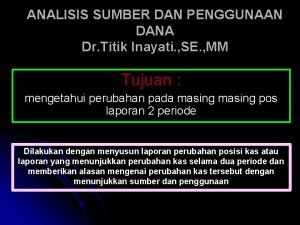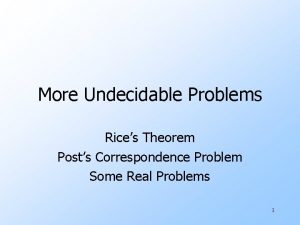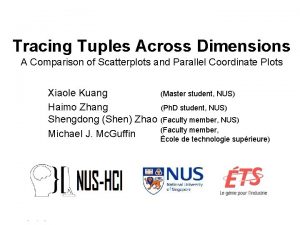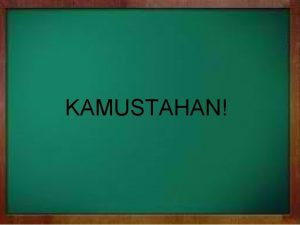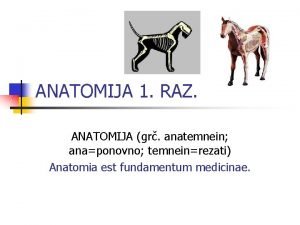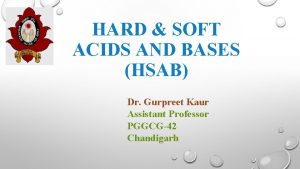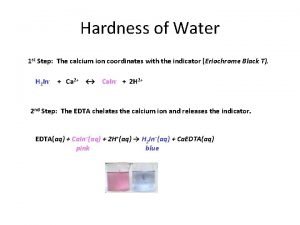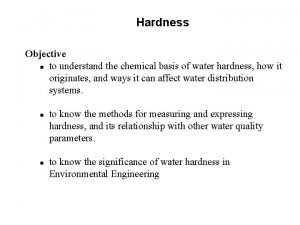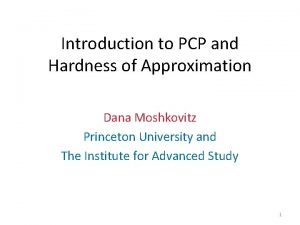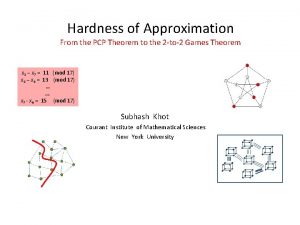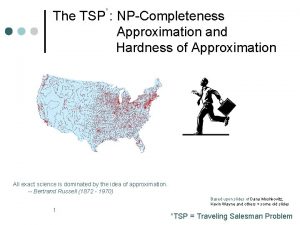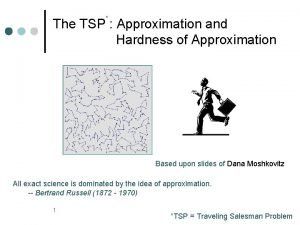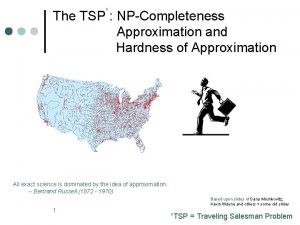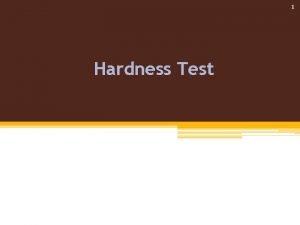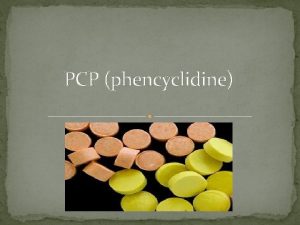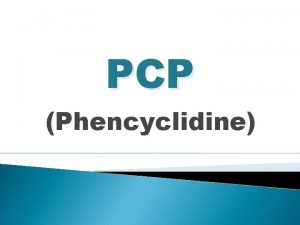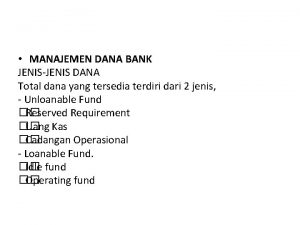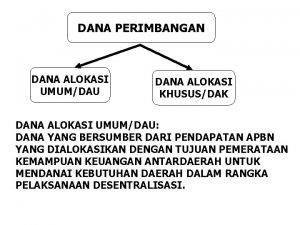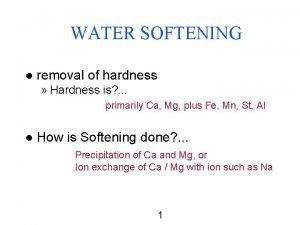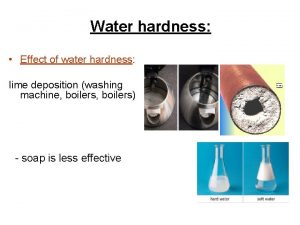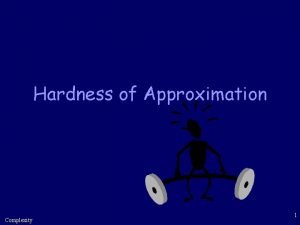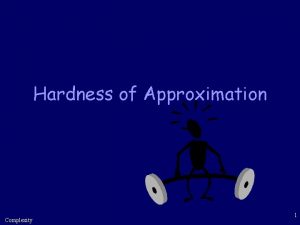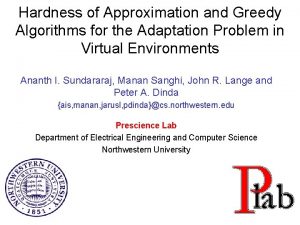Introduction to PCP and Hardness of Approximation Dana











![Gap NP-Hard Approximation NP-hard Claim: If the [A, B]-gap version of a problem is Gap NP-Hard Approximation NP-hard Claim: If the [A, B]-gap version of a problem is](https://slidetodoc.com/presentation_image_h2/c1c1b102f622efff45ac42a145063efc/image-12.jpg)



![Connection to Probabilistic Checking of Proofs [FGLSS 91, AS 92, ALMSS 92] Claim: If Connection to Probabilistic Checking of Proofs [FGLSS 91, AS 92, ALMSS 92] Claim: If](https://slidetodoc.com/presentation_image_h2/c1c1b102f622efff45ac42a145063efc/image-16.jpg)


![The PCP Theorem […, AS 92, ALMSS 92]: Every NP language L has a The PCP Theorem […, AS 92, ALMSS 92]: Every NP language L has a](https://slidetodoc.com/presentation_image_h2/c1c1b102f622efff45ac42a145063efc/image-19.jpg)





![Equivalent Formulation of PCP Thm Theorem […, AS 92, ALMSS 92]: NP-hard to approximate Equivalent Formulation of PCP Thm Theorem […, AS 92, ALMSS 92]: NP-hard to approximate](https://slidetodoc.com/presentation_image_h2/c1c1b102f622efff45ac42a145063efc/image-25.jpg)


![How To Prove The Projection Games Theorem? [AS 92, ALMSS 92] PCP Theorem Parallel How To Prove The Projection Games Theorem? [AS 92, ALMSS 92] PCP Theorem Parallel](https://slidetodoc.com/presentation_image_h2/c1c1b102f622efff45ac42a145063efc/image-28.jpg)


- Slides: 30

Introduction to PCP and Hardness of Approximation Dana Moshkovitz Princeton University and The Institute for Advanced Study 1

This Talk A Groundbreaking Discovery! (From 1991 -2) The PCP Theorem and Hardness of Approximation 2

A Canonical Optimization Problem MAX-3 SAT: Given a 3 CNF Á, what fraction of the clauses can be satisfied simultaneously? Á = (x 7 : x 12 x 1) Æ … Æ (: x 5 : x 9 x 28) x 1 x 5 xn-3 x 2 x 6 x 3 x 7 xn-1 x 4 x 8 xn . . . xn-2 3

Good Assignment Exists Claim: There must exist an assignment that satisfies at least 7/8 fraction of clauses. Proof: Consider a random assignment. . x 1 x 2 x 3 . . xn 4

1. Find the Expectation Let Yi be the random variable indicating whether the i-th clause is satisfied. For any 1 i m, FFFF F F TT FTFT F TTT TFFT TF TT TTFT TTTT 5

1. Find the Expectation The number of clauses satisfied is a random variable Y= Yi. By the linearity of the expectation: E[Y] = E[ Yi] = E[Yi] = 7/8 m 6

2. Conclude Existence Thus, there exists an assignment which satisfies at least the expected fraction (7/8) of clauses. 7

®-Approximation (Max Version) For every input x, computed value C(x): ® ¢ OPT(x) · C(x) · OPT(x) Corollary: There is an efficient ⅞-approximation algorithm for MAX-3 SAT. 8

Better Approximation? Fact: An efficient tighter than ⅞-approximation algorithm is not known. Our Question: Can we prove that if P≠NP such algorithm does not exist? ? 9

Computation Decision Hardness of distinguishing far off instances Hardness of approximation OPT(x) A B gap 10

Gap Problems (Max Version) • Instance: … • Problem: to distinguish between the following two cases: The maximal solution ≥ B The maximal solution < A 11
![Gap NPHard Approximation NPhard Claim If the A Bgap version of a problem is Gap NP-Hard Approximation NP-hard Claim: If the [A, B]-gap version of a problem is](https://slidetodoc.com/presentation_image_h2/c1c1b102f622efff45ac42a145063efc/image-12.jpg)
Gap NP-Hard Approximation NP-hard Claim: If the [A, B]-gap version of a problem is NP-hard, then that problem is NP-hard to approximate to within factor A/B. 12

Gap NP-Hard Approximation NP-hard Proof (for maximization): Suppose there is an approximation algorithm that, for every x, outputs C(x) ≤ OPT so that C(x) ≥ A/B¢OPT. Distinguisher(x): * If C(x) ≥ A, return ‘YES’ * Otherwise return ‘NO’ A B 13

Gap NP-Hard Approximation NP-hard (1) If OPT(x) ≥ B (the correct answer is ‘YES’), then necessarily, C(x) ≥ A/B¢OPT(x) ≥ A/B·B = A (we answer ‘YES’) (2) If OPT(x)<A (the correct answer is ‘NO’), then necessarily, C(x) ≤ OPT(x) < A (we answer ‘NO’). 14

New Focus: Gap Problems Can we prove that gap-MAX-3 SAT is NP-hard? 15
![Connection to Probabilistic Checking of Proofs FGLSS 91 AS 92 ALMSS 92 Claim If Connection to Probabilistic Checking of Proofs [FGLSS 91, AS 92, ALMSS 92] Claim: If](https://slidetodoc.com/presentation_image_h2/c1c1b102f622efff45ac42a145063efc/image-16.jpg)
Connection to Probabilistic Checking of Proofs [FGLSS 91, AS 92, ALMSS 92] Claim: If [A, 1]-gap-MAX-3 SAT is NP-hard, then every NP language L has a probabilistically checkable proof (PCP): There is an efficient randomized verifier that queries 3 proof symbols: • x L: There exists a proof that is always accepted. • x L: For any proof, the probability to err and accept is ≤A. Note: Can get error probability ² by making O(log 1/²) queries. 16

Probabilistic Checking of x L? If yes, all of Á clauses are satisfied. If no, fraction ≤A of Á clauses can be satisfied. Prove x L! Enough to check a random clause! This assignment satisfies Á! x 1 x 5 xn-3 x 2 x 6 x 3 x 7 xn-1 x 4 x 8 xn . . . xn-2 17

Other Direction: PCP Gap-MAX-3 SAT NP-Hard • Note: Every predicate on O(1) Boolean variables can be written as a conjunction of O(1) 3 -clauses on the same variables, as well as, perhaps, O(1) more variables. – If the predicate is satisfied, then there exists an assignment for the additional variables, so that all 3 -clauses are satisfied. – If the predicate is not satisfied, then for any assignment to the additional variables, at least one 3 -clause is not satisfied. 18
![The PCP Theorem AS 92 ALMSS 92 Every NP language L has a The PCP Theorem […, AS 92, ALMSS 92]: Every NP language L has a](https://slidetodoc.com/presentation_image_h2/c1c1b102f622efff45ac42a145063efc/image-19.jpg)
The PCP Theorem […, AS 92, ALMSS 92]: Every NP language L has a probabilistically checkable proof (PCP): There is an efficient randomized verifier that queries O(1) proof symbols: x L: There exists a proof that is always accepted. x L: For any proof, the probability to accept is ≤½. Remark: Elegant combinatorial proof by Dinur, 05. 19

Conclusion Probabilistic Checking of Proofs (PCP) Hardness of Approximation 20

Tight Inapproximability? • Corollary: NP-hard to approximate MAX-3 SAT to within some constant factor. • Question: Can we get tight ⅞-hardness? 21

The Bellare-Goldreich-Sudan Paradigm, 1995 Projection Games Theorem (aka Hardness of Label-Cover, or low error two-query projection PCP) Long-code based reduction Tight Hardness of Approximating 3 SAT [Håstad 97] 22

The Bellare-Goldreich-Sudan Paradigm, 1995 Projection Games Theorem (aka Hardness of Label-Cover, or low error two-query projection PCP) Long-code based reduction e. g. , Set-Cover [Feige 96] Tight Hardness of Approximation for Many Problems 23

Projection Games & Label-Cover • • • Bipartite graph G=(A, B, E) Two sets of labels §A, §B Projections ¼e: §A §B • • • Players A & B label vertices Verifier picks random e=(a, b)2 E Verifier checks ¼e(A(a)) = B(b) • Value = max. A, BP(verifier accepts) A B ¼e ? ? Label-Cover: given projection game, compute value. 24
![Equivalent Formulation of PCP Thm Theorem AS 92 ALMSS 92 NPhard to approximate Equivalent Formulation of PCP Thm Theorem […, AS 92, ALMSS 92]: NP-hard to approximate](https://slidetodoc.com/presentation_image_h2/c1c1b102f622efff45ac42a145063efc/image-25.jpg)
Equivalent Formulation of PCP Thm Theorem […, AS 92, ALMSS 92]: NP-hard to approximate Label-Cover within some constant. Proof: by reduction to Label. Cover (see picture). Verifier randomness Proof entries s… Verifier querie n = eck o i ct ch e j y Pro tenc sis n o c symbol Accepting verifier view 25

Projection Games Theorem: Low Error PCP Theorem Claim: There is an efficient 1/k-approximation algorithm for projection games on k labels (i. e. , |§A|, |§B|·k). Projection Games Theorem For every ²>0, there is k=k(²), such that it is NPhard to decide for a given projection game on k labels whether its value = 1 or < ². 26

The Bellare-Goldreich-Sudan Paradigm Projection Games Theorem (aka Hardness of Label-Cover, or low error two-query projection PCP) Tight Hardness of Approximation for Many Problems 27
![How To Prove The Projection Games Theorem AS 92 ALMSS 92 PCP Theorem Parallel How To Prove The Projection Games Theorem? [AS 92, ALMSS 92] PCP Theorem Parallel](https://slidetodoc.com/presentation_image_h2/c1c1b102f622efff45ac42a145063efc/image-28.jpg)
How To Prove The Projection Games Theorem? [AS 92, ALMSS 92] PCP Theorem Parallel repetition Theorem [Raz 94] ? ? [M-Raz 08] Construction Projection Games Theorem Hardness of Approximation 28

The Khot Paradigm, 2002 Unique Games Conjecture Long-code based reduction Constraint Satisfaction e. g. , Max-Cut [KKMO 05] Problems [Raghavendra 08] e. g. , Vertex-Cover [DS 02, KR 03] Tight Hardness of Approximation for More Problems 29

Thank You! 30
 Analisis sumber dana dan penggunaan dana
Analisis sumber dana dan penggunaan dana Jednog dana ili jednoga dana
Jednog dana ili jednoga dana Pcp ppi
Pcp ppi Pcp scitt
Pcp scitt If pcp is decidable then mpcp is
If pcp is decidable then mpcp is Pcp treatment
Pcp treatment Pcp vs scp
Pcp vs scp Saan galing ang salitang recherche
Saan galing ang salitang recherche Pcp
Pcp Fsma pcp
Fsma pcp Krokodil droge
Krokodil droge Pcp theorem
Pcp theorem Como o pcp ajuda a empresa a se tornar competitiva
Como o pcp ajuda a empresa a se tornar competitiva Spc forum
Spc forum Pcp ppi
Pcp ppi Pcpkey
Pcpkey Phenylcyclohexylpiperidine
Phenylcyclohexylpiperidine Pcp id number lookup harvard pilgrim
Pcp id number lookup harvard pilgrim Limitation of hsab principle
Limitation of hsab principle Hardness texture color and freezing point are examples of
Hardness texture color and freezing point are examples of Discuss how permanent hardness of water can be removed
Discuss how permanent hardness of water can be removed Minecraft block hardness
Minecraft block hardness Diamond mohs scale
Diamond mohs scale Workshop test for toughness
Workshop test for toughness Hardness test is the ability of a material to resist
Hardness test is the ability of a material to resist How to calculate hardness of water
How to calculate hardness of water Water hardness equation
Water hardness equation Gcse geology data sheet
Gcse geology data sheet Pseudo hardness of water
Pseudo hardness of water Total hardness calculation
Total hardness calculation What is a clipper cut milady
What is a clipper cut milady
